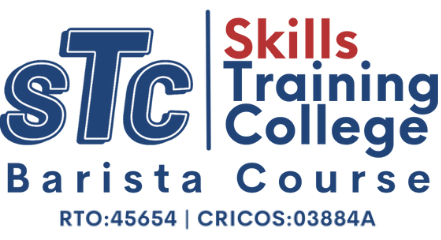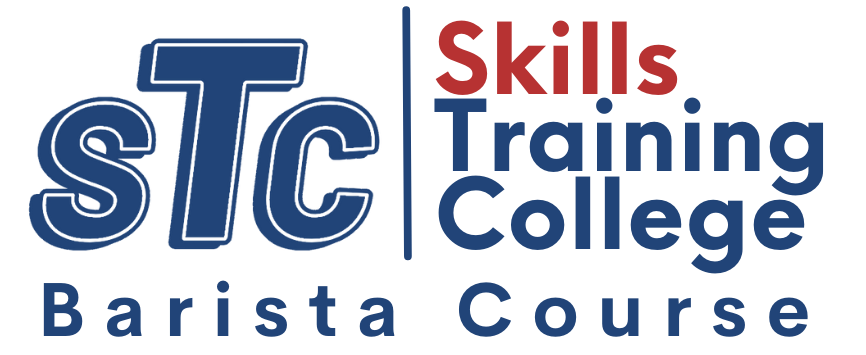Whether you currently drink filter coffee or stove-top espresso, if you love coffee, you probably cannot imagine a day without this rich black liquid. And, if you’re reading this, you want to perfect that daily cup, making it your piece of art. Picture yourself as a coffee artist for the day, where you want to understand the nuts and bolts of your tools before you make a purchase.
An artist carefully chooses each brush with precision for the strokes they’re going to produce on the canvas, and now it’s your turn to wear this artist hat and get a little more serious about coffee art.
If you’re a beginner to the coffee brewing world, shopping around and learning about your tools, you may have discovered that the coffee brewing process has two steps:
- You take your fresh pour of ground coffee beans with a small amount of hot water in your filter for it to bloom for about 30 to 40 seconds
- Next, you pour your water over the grounds for the coffee to drip into the carafe, just like mixing water with your paint to get the right texture
We give you all the information you need in this blog. Still, a Nationally Accredited Barista Course From Skills Training College will give you that hands-on mastery and experience to enter the Barista World.
What Is Coffee Agitation?
The word itself brings chaos to your mind, doesn’t it? Coffee agitation is a gentle stir to the coffee bed that creates movement and causes the coffee to bloom. You put your coffee through the necessary turbulence to bring out your best texture, just like you’d do with your acrylic or water paint before it touches the canvas.
Agitation is that step in the process that helps saturate the coffee grounds and breaks the dry clumps that stick to the portafilter or coffee-making tools, in this case, to achieve the right consistency and flavour.
Agitation here is our superhero of the process because it ensures even extraction and controls the blending of coffee with water. It is an important but not the only factor contributing to great smooth, brilliant-tasting coffee with great consistency.

What is Channelling?
For the perfect coffee, you need the perfect grind size. This depends on many factors, including your machine and the coffee you’re using. However, if you go too fine, you’ll find the puck (The round flat coffee bed in the espresso machine) is highly dense and almost impermeable to the water after tamping it.
Let’s think of this process through the eyes of an espresso machine this time. The actors involved here are the portafilter basket (the basket that holds the puck, which holds the coffee) and the puck (the flat round coffee bed where the coffee grounds lie).
It’s normal for the portafilter basket to fill unevenly after being filled with the grounds. Uneven grind density will cause the puck to have denser and less dense patches throughout, generating routes with varying degrees of resistance when you are brewing coffee.
When the shot is pulled, the common dense areas become the path of least resistance, where channels form. Over-extraction usually occurs within these channels, which causes the denser part of the puck to remain undersaturated with water. Getting too technical, aren’t we? Let’s dive into the extraction process. We’re very close to understanding how those little coffee guys work!
What Is Extraction?
Water and coffee are two peas in a pod for getting your coffee blend right. We want to consistently taste the best flavours of coffee when it is brewed. One of the primary methods to get there is consistent extraction. The higher the extraction rate we accomplish depends on how evenly the coffee grinds are exposed to water. Likewise, the brew will be well-balanced when other factors meet their targets.
Typically, when you choose the grind size of your brew, you define a generic size of the coffee particles. The reality of the particles is that they aren’t even (Sounds like life). You will have a mix of the small ones and the large ones. This is why agitation is our superhero that balances the process to make it an enjoyable coffee experience (Hutagalung, 2022).
What Coffee Machine Should I Buy?
Lever-Driven Machines
You need to be physically strong to draw a shot on a lever-driven machine. There are two: spring-loaded and manual.
Manual – The lever’s horizontal resting position identifies a manual machine. An aperture in the brewing chamber allows warm water to be drawn in when it is raised, saturating the grounds. When the trained barista lowers the lever, they can adjust the pre-duration, infusion flow rate, and pressure.
Spring-loaded – The lever points upward when the internal spring is relaxed in a machine that uses springs. The spring contracts when the lever is pulled downward, lifting the piston. This makes room for water to enter the brewing chamber.
Pump driven – We will now concentrate on this type, as they’re the ones you’re probably after. Let’s go over Semi-Automatic, Automatic and Super-automatic machines.
Semi-Automatic Machines
When you think of a professional espresso machine, this is generally what first comes to mind. Water is forced into the grouphead by an automated system in semi-automatic machines. The barista is in charge of tamping, grinding, and controlling the length of the extraction process. And she’s probably throwing her coffee grounds on her veggie patch because they’re a great source of nutrients!
Automated Machines
They resemble semi-automatic machines, but also automatically halt the water flow. You won’t need to stand over each espresso to prevent overflow because this guarantees a constant volume in every shot. Cafés also employ automatic espresso equipment, and those seeking to work in this field will enhance their job prospects in nationally recognised barista training.
Super-Automatic Machines
These machines are automated espresso and coffee makers with built-in coffee grinders that make your drink at the push of a button. What? Don’t these rule out Agitation, Channelling and Extraction? Coffee connoisseurs, you know the difference, so we’ll let you decide!
Conclusion
Perfecting coffee brewing requires understanding, experimentation, and customisation. Whether you’re a beginner or a seasoned barista, trial and error is part of the artistic process. Knowing your tools is crucial for achieving the desired coffee quality, texture, and consistency. Preferences vary, and customisation is key to crafting great coffee. Each person is unique, and that uniqueness plays a vital role in perfecting your brew.
If you are looking to begin a career as a professional coffee artist, we recommend you take a nationally recognised barista course to open more opportunities and kick-start your career.
Reference List
- Caprioli, G., Cortese, M., Cristalli, G., Maggi, F., Odello, L., Ricciutelli, M., Sagratini, G., Sirocchi, V., Tomassoni, G. and Vittori, S. (2012). Optimization of espresso machine parameters through the analysis of coffee odorants by HS-SPME–GC/MS. Food Chemistry, [online] 135(3), pp.1127–1133.
- Chung, S. (2019). Specialty Coffee: The Pour-Over. wisc.pb.unizin.org.
- Hutagalung, S. (2022). Water Flow & Temperature Control to Increase Extraction Yield of Light-roasted Coffee Beans. Ultima Computing : Jurnal Sistem Komputer, [online] 14(2), pp.54–59.



